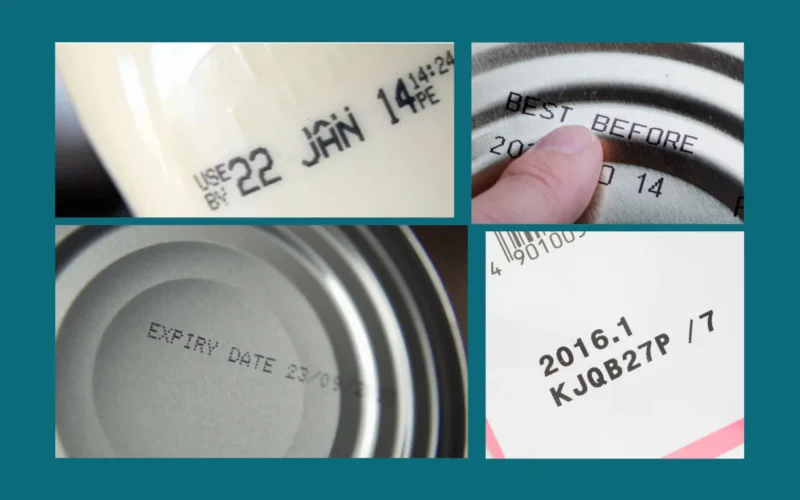Have you ever wondered about those dates printed on food packages? You might see “Best Before” on some items and “Expiry Date” on others.
These labels can be confusing, but they tell you important things about the food you buy and eat.
The main difference is that best before dates are about food quality, while expiry dates are about food safety. Best before dates suggest when food tastes best, but you can often eat it after this date.
Expiry dates, on the other hand, tell you the last day it’s safe to eat something.
Knowing what these dates mean can help you make smart choices at the store and at home.
You can avoid wasting food and save money by understanding when food is still good to eat.
Let’s take a closer look at how to read and use these dates to keep your meals tasty and safe.
Understanding Dates on Food Packaging
Food labels can be confusing. Let’s clear up what those dates really mean so you can make smart choices about what’s in your fridge.
Interpreting ‘Best Before’ Dates
Best before dates are about quality, not safety. They tell you when food is at its peak freshness and flavor. After this date, the food might not taste as good, but it’s usually still safe to eat.
You’ll often see best before dates on:
- Canned goods
- Dry pasta
- Cookies and crackers
Use your senses to check if food past its best before date is still good. Look for signs of spoilage like mold or strange smells. If it looks and smells fine, it’s probably okay to eat.
Unpacking Use-By and Expiry Dates
Use-by dates are about safety. They tell you when food might become unsafe to eat. It’s important not to eat food after its use-by date, even if it looks and smells fine.
You’ll see use-by dates on:
- Fresh meat and fish
- Ready-to-eat salads
- Dairy products
Expiry dates are similar to use-by dates. They’re often found on baby formula and some medical products. Don’t use these items after the expiry date.
Labels and Their Meanings for Consumers
Food labels give you important info about what you’re eating. Here’s a quick guide to common terms:
- “Sell by”: Tells stores how long to display the product
- “Pack date”: When the food was packaged
- “Freeze by”: Last date recommended for freezing to maintain quality
Remember, these dates are guidelines. Your food’s shelf life depends on how you store it. Keep your fridge at the right temperature and seal packages tightly to make food last longer.
When in doubt, trust your senses. If food looks or smells off, it’s better to be safe and throw it out.
Difference Between Best Before and Expiry Date
You’ve probably seen different dates on food labels. Let’s talk about two important ones: best before dates and expiry dates.
Best before dates tell you when food is at its tastiest. After this date, it might not be as yummy, but it’s usually still safe to eat.
Expiry dates are different. They tell you when food might not be safe anymore. You shouldn’t eat food after its expiry date.
Here’s a quick comparison:
| Best Before Date | Expiry Date |
|---|---|
| About quality | About safety |
| Food may still be okay | Don’t eat after this date |
| Common on many foods | Only on some foods |
You’ll find these dates on food labels. They help you know when to eat your food.
Remember, “use by” dates are like expiry dates. They’re about safety too. Don’t mix them up with best before dates!
Food labels are important. They give you info to keep you healthy. Always check the dates before you eat something.








